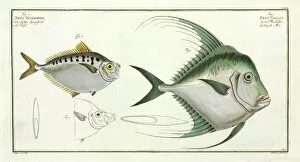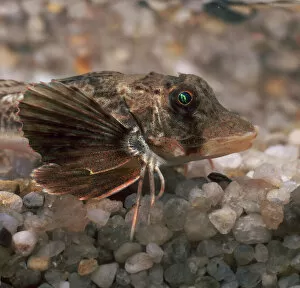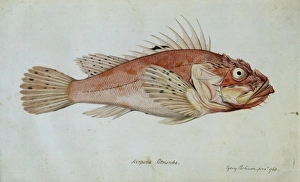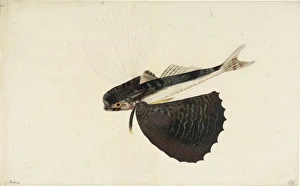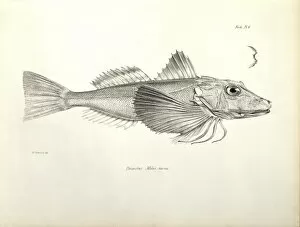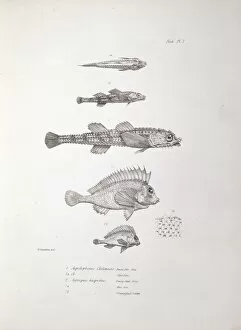Scorpaeniform Collection
Scorpaeniform, a diverse and fascinating group of fish species, includes some truly remarkable creatures
All Professionally Made to Order for Quick Shipping
Scorpaeniform, a diverse and fascinating group of fish species, includes some truly remarkable creatures. One such example is Scorpaena volitans (Pterois volitans), commonly known as the lionfish or devil firefish. With its striking red and white stripes and venomous spines, this predatory beauty has become an invasive species in many parts of the world. Another notable member of the scorpaeniform family is Zeus gallus and Zeus insidiator, also known as the John Dory. These peculiar-looking fish have flat bodies with a distinctive dark spot on their sides resembling an eye. Their unique appearance helps them blend into their surroundings while hunting for small prey. Scorpaena antennata (Pterois antennata) is another intriguing scorpaeniform species that can be found in tropical waters. This vibrant fish boasts flamboyant colors and long spines that serve both as a defense mechanism against predators and as a means to capture unsuspecting prey. On the other end of the spectrum, we have Scorpaena horrida (Synanceia horrida), better known as the stonefish or scorpionfish. This master of camouflage hides itself among rocks or sandy bottoms, waiting patiently for its next meal to swim by before striking with lightning speed using its venomous spines. Moving away from traditional scorpionfish appearances, we encounter Southern pigfish (Congiopodus leucopaecilus). Originally classified under Agri genus but now part of LS Plate 151 from the John Reeves Collection, this side view image showcases its upper torso tub gurnard physique – truly one-of-a-kind. Aspitrgla cuculus, commonly referred to as red gurnard or sea robin, displays stunning hues ranging from deep reds to oranges. Its large pectoral fins resemble wings when spread out underwater – an impressive sight indeed. One must exercise caution when encountering Synanceja verrucosa, the poison stonefish.



